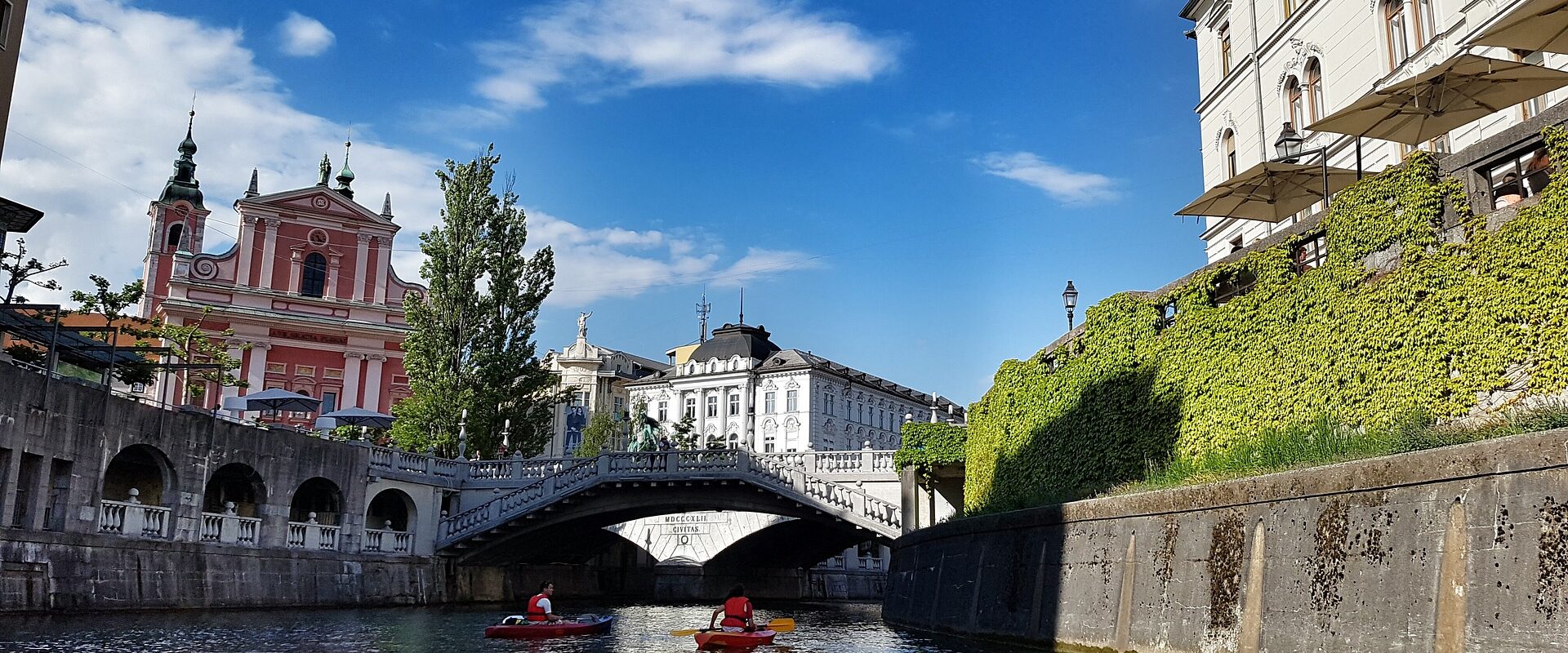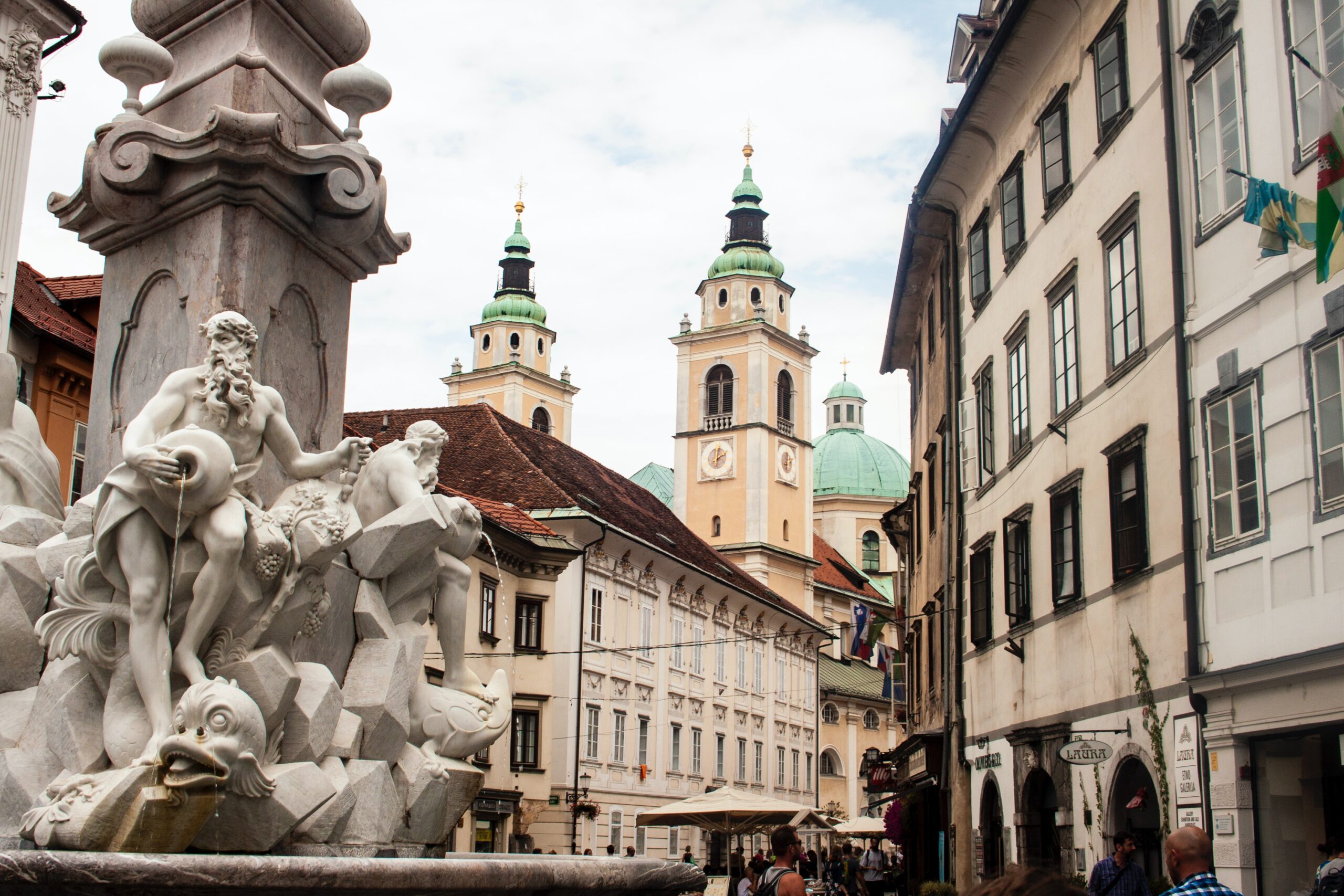
CITY CENTER | 2 km
According to one of the many etymological explanations, its name is derived from the word ‘ljubljena’, meaning ‘loved’. It is therefore not surprising that Ljubljana is beloved by its citizens and visitors alike (About Ljubljana, 2020). The picturesque image of the centre of Ljubljana has been marked by different historic periods and most notably by the works of the world-famous architect Jože Plečnik (Wedam, 2020).
A people-friendly city
As its inhabitants and numerous visitors will tell you, Ljubljana is, indeed, a people-friendly city. Categorised as a medium-sized European city, it offers everything a metropolis does yet preserves its small-town friendliness (About Ljubljana, 2020).
The old meets the new

In Ljubljana the old meets the new; and it seems that history has spent all of the settlement’s five millennia preparing it to become the nation’s capital. It has managed to retain traces from all periods of its rich history; from the legacy of Roman Emona; through to the Renaissance, Baroque and Art Nouveau periods characterised in the house fronts and ornate doorways of the city centre, the romantic bridges adorning the Ljubljanica river, the lopsided rooftops and a park reaching deep into the city centre. Here eastern and western cultures met; and the Italian concept of art combined with the sculptural aesthetics of Central European cathedrals (About Ljubljana, 2020).
A city of culture
Ljubljana is a city of culture. It is home to numerous theatres, museums and galleries, and boasts one of the oldest philharmonic orchestras in the world. The first music society in Slovenia, the Academia philharmonicorum, was founded in 1701. It was a vehicle for baroque music and also facilitated the development of musical production in this region. Its honorary members included such renowned composers as Joseph Haydn, Ludwig van Beethoven and Johannes Brahms, and distinguished musicians such as the violinist Nicolo Paganini. Between 1881 and 1882, at the very start of his career, Gustav Mahler was its resident conductor (About Ljubljana, 2020).

A modern and lively city
As four Slovene regions meet in Ljubljana, the city’s numerous restaurants and inns offer a wide range of local delicacies, not to mention superb wines. Ljubljana did not earn the label of “the city of wine and vine” for nothing. In the past it was the wine-trading centre of the region and grapevines were planted on the slopes leading up to the present-day castle by the inhabitants of the Roman settlement of Emona. Today scientists are drawn to the city because of its high-calibre institutes and university, as are artists due to its world-famous graphic biennial, art academy and countless art galleries. International businessmen, economists and experts from all fields frequently attend the city’s many business and congressional meetings, exhibitions and trade fairs (About Ljubljana, 2020).
In short: Ljubljana is a city that people often return to, be it because of work or because of pleasant memories of previous visits. It is similar to a number of other pleasant European cities – yet it is different – and if you want to be fully assured that Ljubljana is an interesting, pretty and friendly place then just ask the locals – they love it. And with a name that, according to one theory, means beloved, how could they do otherwise? (About Ljubljana, 2020).
Bibliography:
About Ljubljana. (2020). Retrieved 6 July 2020, from https://www.ljubljana.si/en/about-ljubljana/
Wedam, D. (2020). Explore the Ljubljana Old Town. Retrieved 6 July 2020, from https://www.visitljubljana.com/en/visitors/explore/things-to-do/sightseeing/article/explore-the-ljubljana-old-town/

